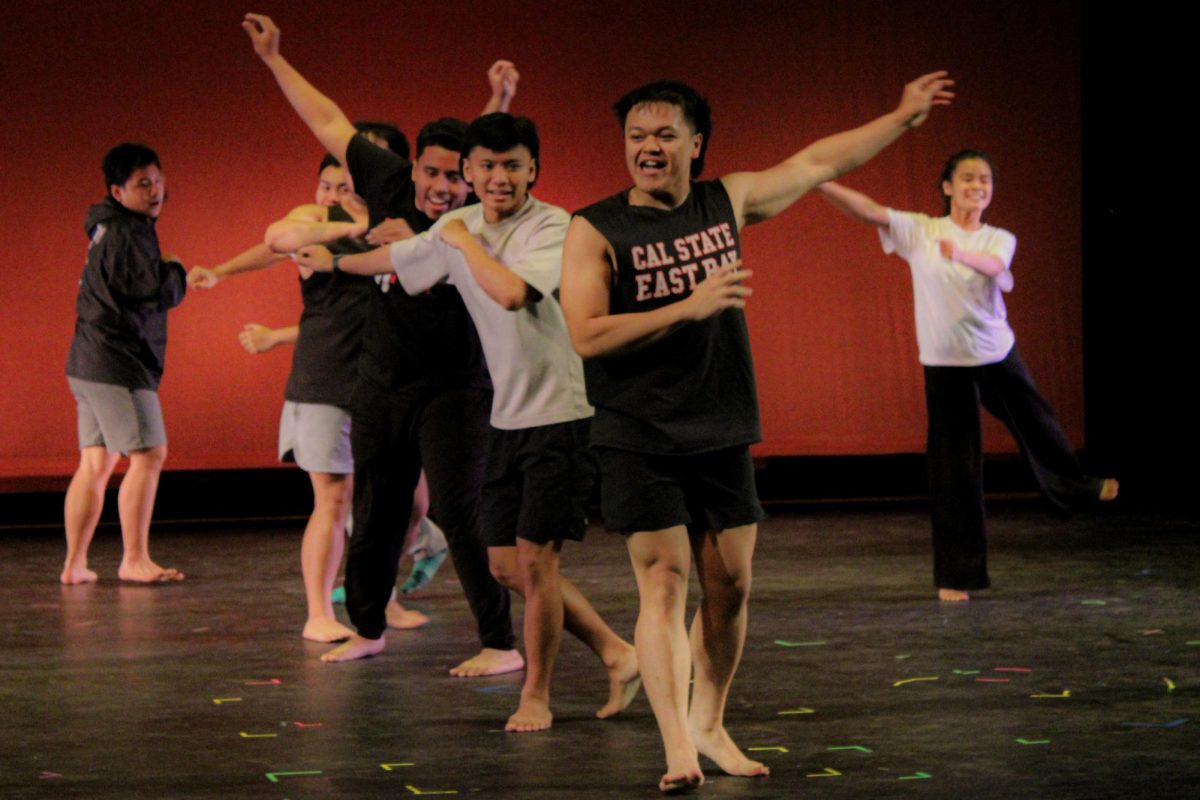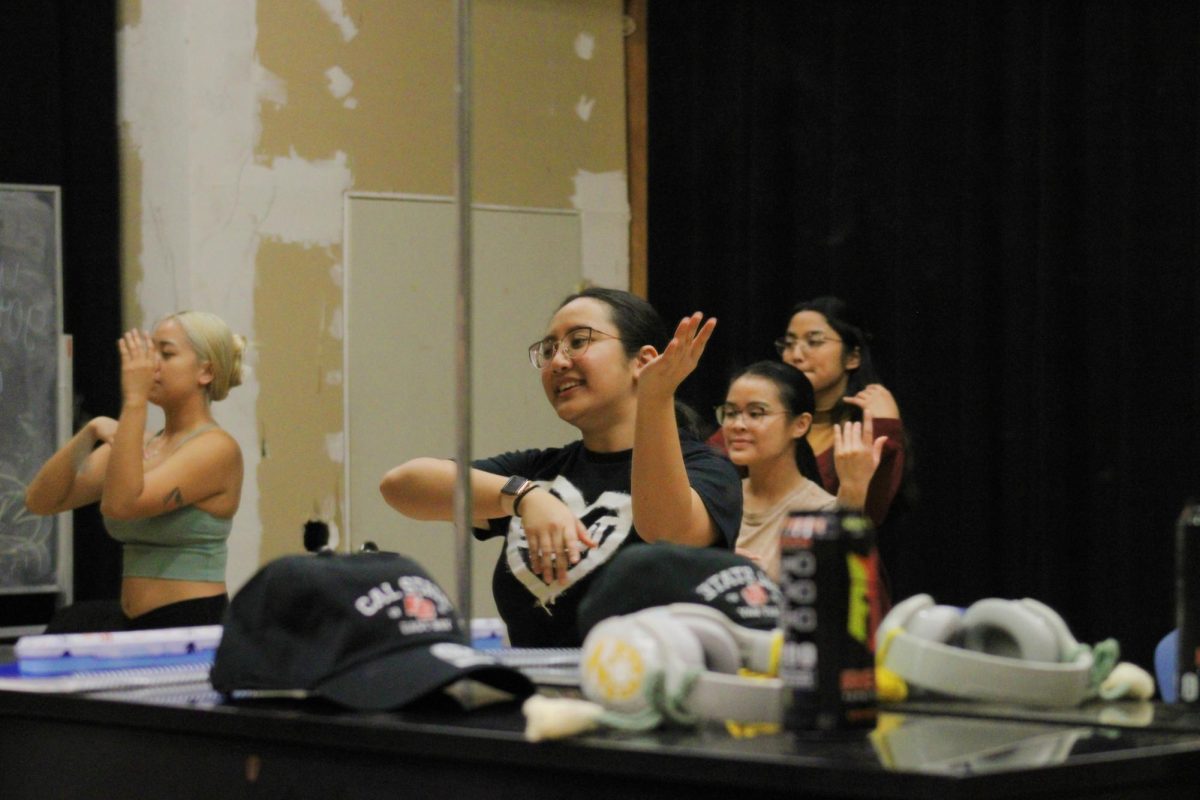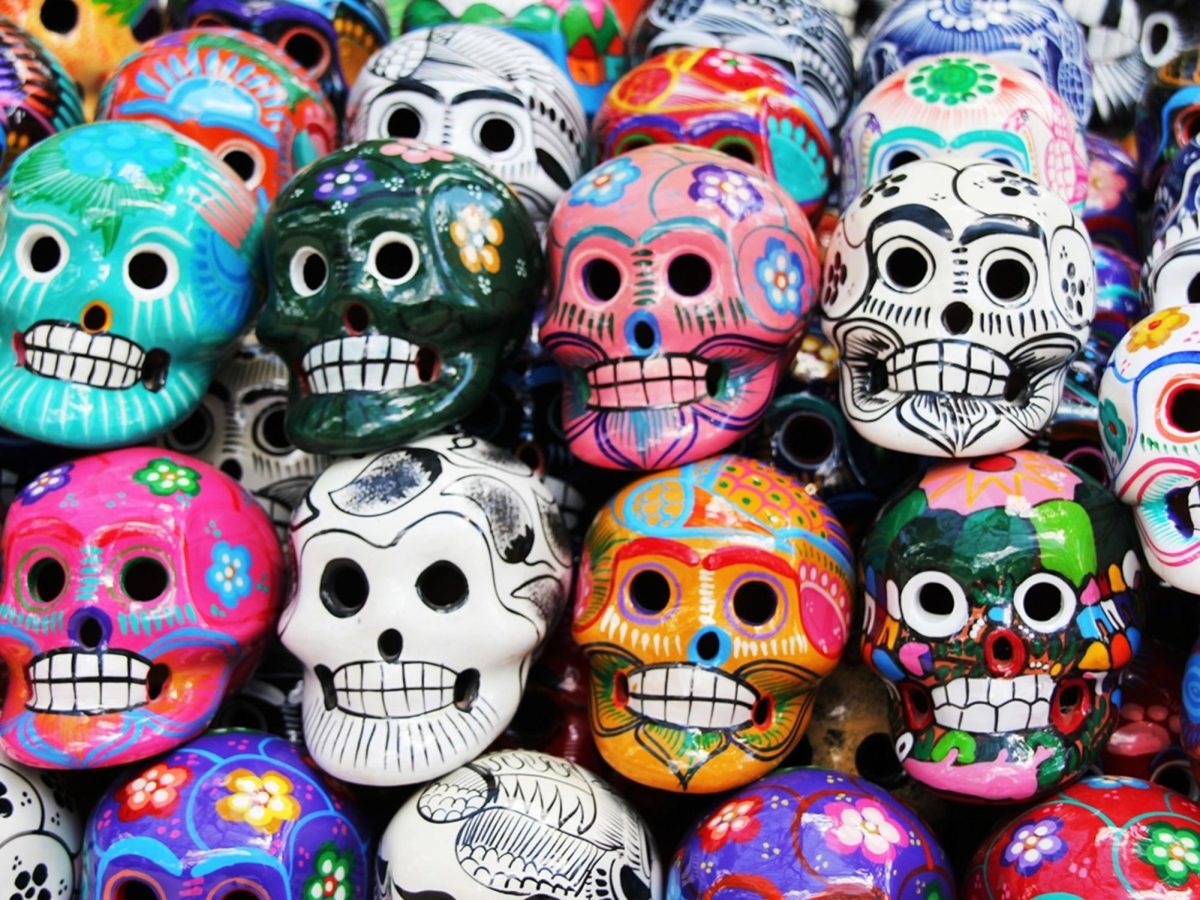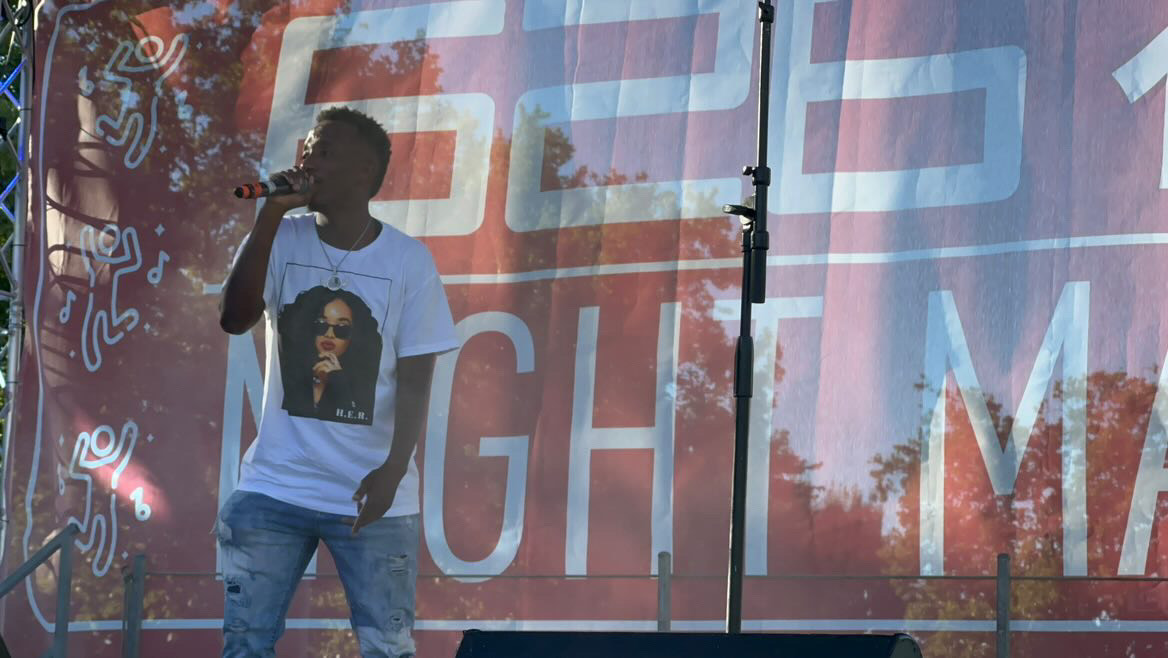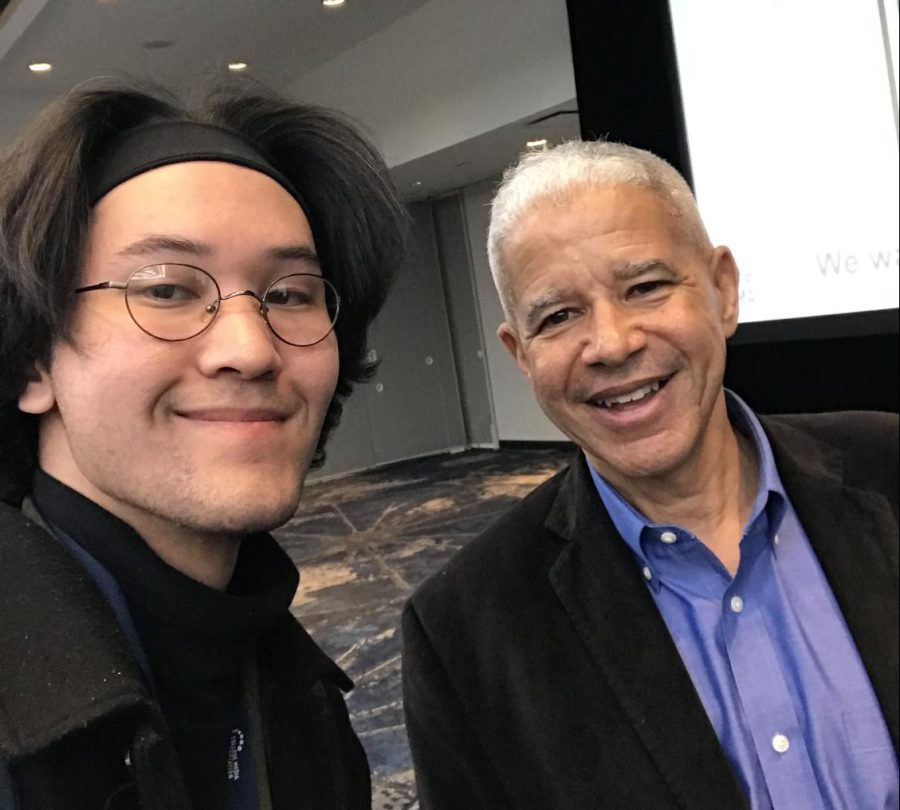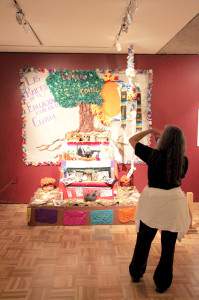
the Days of the Dead exhibit created
by Tennyson High School students.
The Oakland Museum of California opened its eighteenth annual Días de los Muertos exhibition yesterday, showcasing the work of a multitude of local artists, teachers, students and docents young and old, all paying tribute to those who have passed on.
Entitled “Forgotten Stories, Remarkable Lives,” the display shows the artists’ varied interpretations of traditional ofrendas, altars used to honor the lives of those who have come before them, whether it is a loved one, or simply an inspiring figure.
Días de los Muertos is rooted in pre-contact Aztec culture, and originally was celebrated in the summer months. Its current incarnation, although not all the same, is generally a celebration of the lives of loved ones who have passed on, taking place on Nov. 1. The date change was the result of the blending of this holiday with the Catholic All Saints’ Day, which occurs on Nov. 2, to appeal to Spanish colonists.
“Because we carry our cultures with us, the Days of the Dead tradition is now really a part of the California experience,” says Evelyn Orantes, the Senior Experience Developer for the Museum, and project manager for the exhibit since 2005. “We want to recognize, as a place of learning, that this tradition comes from somewhere, but we also recognize, that it is adapted to its current surroundings.”
Almost all of the showings have traditional items typically seen in altars, such as sugar skulls, generally given as gifts to family and friends, especially children. While there is no standard template for a sugar skull, they are generally covered in a medley of bright colors, with prominence given to the designs in the teeth and the eyes.
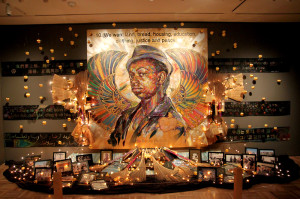 Another traditional element featured in many of the pieces is papel picado, punched paper that is cut, stamped or folded in festive patterns to convey a message.
Another traditional element featured in many of the pieces is papel picado, punched paper that is cut, stamped or folded in festive patterns to convey a message.
Each work of art expresses gratitude and admiration for a particular person or group of people.
In Dio Mendoza’s “Gemelo,” meaning twin, he painted an infant representing his brother Jesús, who died as a baby, on the top of a miniature kitchen table, where traditional angelitos, meaning little angels’, funerals would be centered. Mendoza says in the description of his work that his brother visited him in his dreams and requested he paint a portrait of him, which he did every year until Jesús turned 21, when the dreams stopped. Viewed from above in a small circular mirror, which references the Mayan underworld, the underside of the table is decorated with a final portrait of Jesús. Above the table are several clippings of punched paper, of which the artist says connect earth and sky.
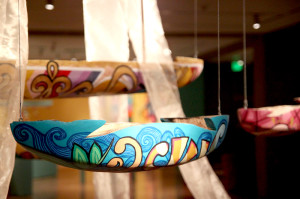 “I think there’s this perception that [this project] will only appeal to a Latino audience, and really because of the universal topic of death and mourning and because, just like all of us are born, all of us will die, it really transcends culture, it transcends age, it transcends all things,” says Orantes.
“I think there’s this perception that [this project] will only appeal to a Latino audience, and really because of the universal topic of death and mourning and because, just like all of us are born, all of us will die, it really transcends culture, it transcends age, it transcends all things,” says Orantes.
“I like that they have the traditional altars, but they also have the more conceptual art as well,” said Chelsea Simmons, 24, of Danville, referencing an exhibit that pays tribute to Bobby Hutton, the first member of the Black Panthers, who was killed by Oakland police in April of 1968.
“For people who don’t know it, sometimes they get a little put off by the name because it is Days of the Dead,” says Orantes, who says people need to be reminded “this is a celebration of life, and the stories of people that were alive and what they have contributed to us and to our communities.”






